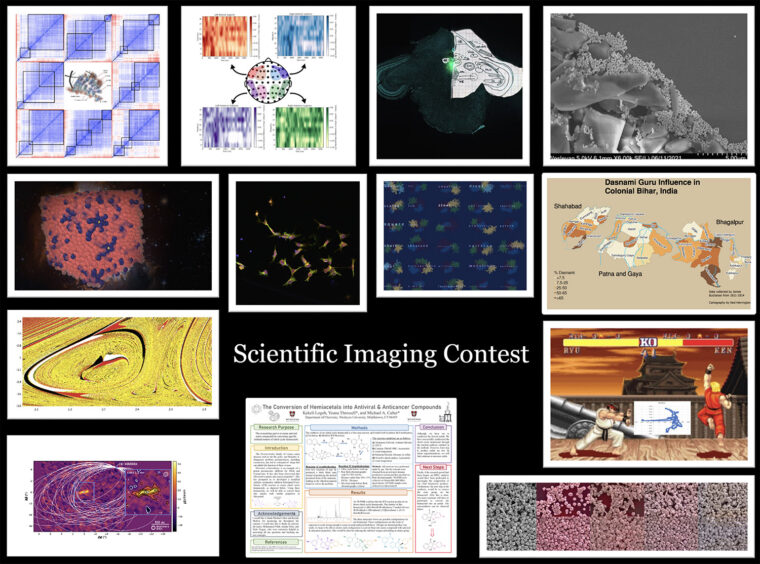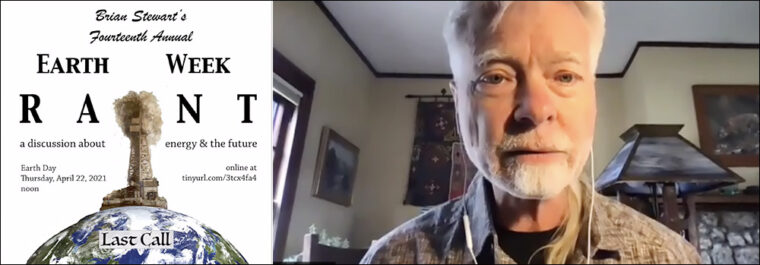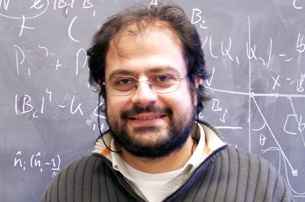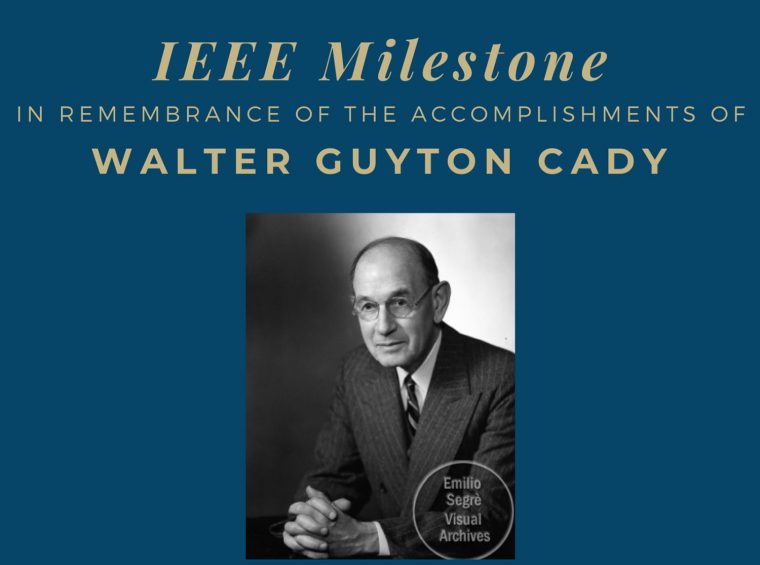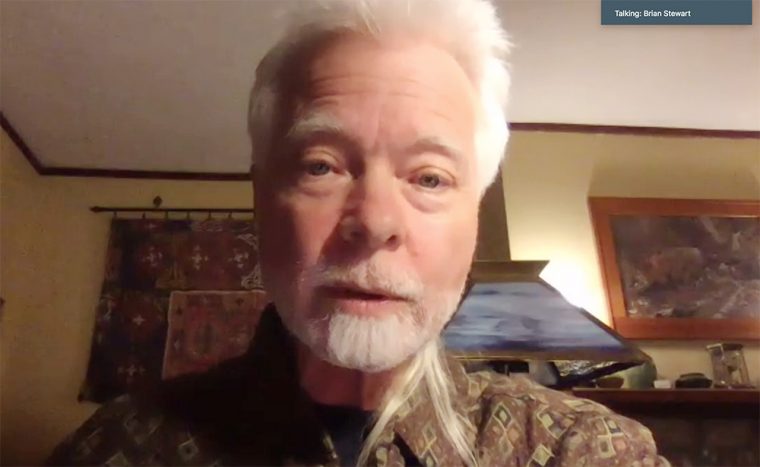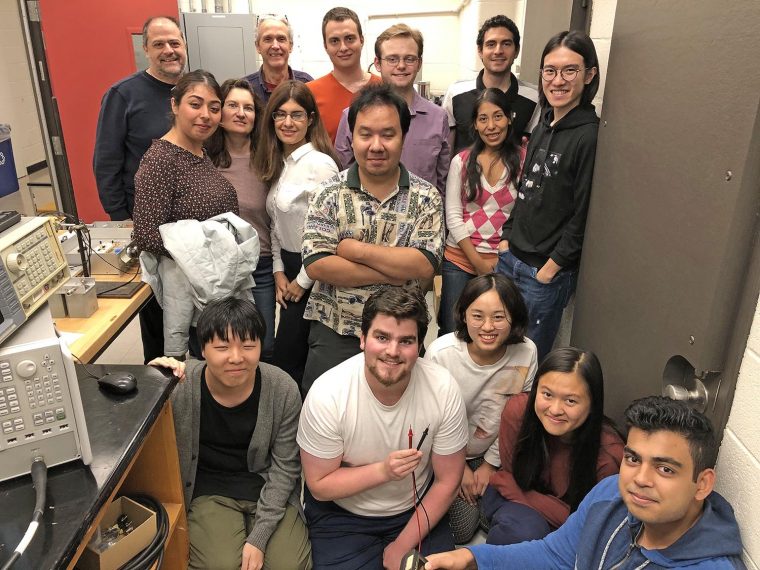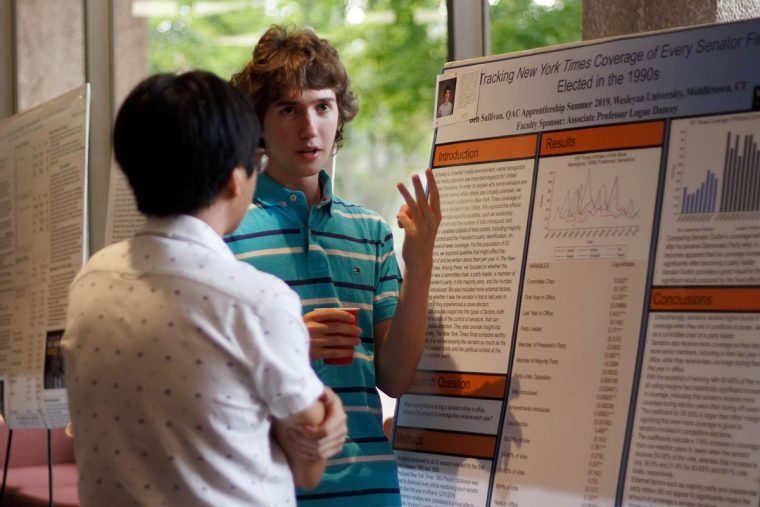At first glance, a viewer sees a single image of pink-tinted cubes, resembling a bacteria culture from high school biology. But upon closer examination, the viewer begins to see a series of other shapes—triangles to hexahedrons to tetahexahedraons (cubes with four-sided pyramids on each face). "If you stare at this image for a while, you can see that it's actually a series of five images in the top row, and five images on the bottom row, and each of these images show us nanoparticles that are made of gold and copper," said Brian Northrop, professor of chemistry. "It's intriguing, captivating,…
When launching spacecrafts and missiles, small navigational mistakes could lead to catastrophic results. A satellite could spin completely out of orbit, a missile could mistakenly strike a civilian territory, or a spaceship could end up at another planet altogether. Three Wesleyan researchers are collaborating on the development of a novel sensor that would benefit navigation and several other applications. The new, hypersensitive acceleration sensor is based on a principle borrowed from nuclear physics and has been developed at Wesleyan. It provides enhanced sensitivity and precision compared to conventional sensors. "Our underlying concept can be applied in a variety of sensing…
In recognition of their career achievements, the following faculty members are being appointed to endowed professorships, effective July 1, 2021: Erik Grimmer-Solem, professor of history, is receiving the Ezra and Cecile Zilkha Professorship in the College of Social Studies, established in 2008. Abigail Hornstein, associate professor of economics, is receiving the Woodhouse/Sysco Professorship of Economics, established in 2002. Edward Moran, professor of astronomy, is receiving the John Monroe Van Vleck Professorship of Astronomy, established in 1982. Suzanne OConnell, professor of earth and environmental sciences, is receiving the Harold T. Stearns Professorship of Earth Sciences, established in 1984. Francis Starr, professor…
(more…)
With support from the Simons Foundation, Tsampikos Kottos, Lauren B. Dachs Professor of Science and Society, professor of physics, will work on groundbreaking wave transport research, ultimately benefiting a broad range of technologies ranging from wireless communications and efficient energy harvesting, to biomedical and avionics sensing technologies. Kottos is one of 11 principal investigators (PIs) from 12 universities and research institutions across the globe to receive funding from the Simons Collaborations in Mathematics and the Physical Sciences Initiative. The group's project, "Harnessing Universal Symmetry Concepts for Extreme Wave Phenomena," is based at the Advanced Science Research Center (ASRC) at the…
Images depicting star collisions, atom movement in yeast ribosomes, and herbaceous plant root scans were the winning entries of the 2020 Wesleyan Scientific Imaging Contest. The Wesleyan Scientific Imaging Contest, held annually in August, recognizes student-submitted images—from experiments or simulations done with a Wesleyan faculty member—that are scientifically intriguing, as well as aesthetically pleasing. The contest is organized by the College of Integrative Sciences as part of the summer research program. The winners included Osama Elgabori '22, Carol Dalgarno '21, and Jolie Villegas '21. Elgabori's advisor is Brian Stewart, professor of physics; Dalgarno's advisor is Michael Weir, professor of biology;…
On April 22, Professor of Physics Brian Stewart held his annual Earth Day Rant. This year's topic was "Bending the Curves: Coping with Crises from Car Crashes to Coronavirus to Climate Change." During his talk, Stewart discussed and compared how a car crash, storm, epidemic, and climate change vary in terms of mitigation, adaptation, perception, agency, cost to the United States, and deaths per 100,000 people. The current epidemic has cost the U.S. more than $2.5 trillion, whereas vehicle accidents amount to $277 billion per year (excluding indirect costs), and storms cause $30 billion per year in damages. All contribute…
Tsampikos Kottos, Lauren B. Dachs Professor of Science and Society and professor of physics, is the co-author of several new publications. They include: "Constant Intensity Conical Diffraction in Discrete One-Dimensional Lattices with Charge-Conjugation Symmetry," published in Optics Letters, Vol. 45, Issue 1, January 2020. "Enhanced Sensing and Nondegraded Thermal Noise Performance Based on PT-Symmetric Electronic Circuits with a Sixth-Order Exceptional Point," published in Physical Review Letters, Vol. 123, Issue 21, November 2019. "Adiabatic Thermal Radiation Pumps for Thermal Photonics," published in Physical Review Letters, Vol. 123, Issue 16, October 2019. Fred Ellis, professor of physics, co-authored this piece. "Effects of…
The Physics Department's Wave-Transport Lab recently received awards totaling $709,000 to support its ongoing aim to understand and manipulate the movement of waves—sound, mechanical, or electromagnetic—through natural or human-made materials. The lab received a $340,000 grant from the National Science Foundation's Division of Civil, Mechanical, and Manufacturing Innovation program titled "Engineering Dynamical Symmetries for Extreme Wave-Matter Interactions in Elastodynamics," and a $369,000 grant from the Department of Defense's Office of Naval Research (ONR) titled "Waveform Shaping Techniques for Targeted Electromagnetic Attacks." The Wave-Transport Lab was established in 2016 when Fred Ellis, chair and professor of physics, and Tsampikos Kottos, the…
The Summe Program for Research in the Sciences culminated with a research poster session in the lobby of Exley Science Center, with more than 100 students participating. The program, held May 29 to July 26, was open to frosh, sophomores and juniors currently enrolled at Wesleyan. Wesleyan science faculty members served as mentors for student research in their laboratories. In addition to the closing poster session, the students participated in weekly seminars and workshops, a symposium, and various social events. After the poster session, students displayed their posters in the hallways outside the introductory biology laboratories. (more…)
In this recurring feature in The Wesleyan Connection, we highlight some of the latest news stories about Wesleyan and our alumni. Wesleyan in the News 1. Inside Higher Ed: 'Safe Enough Spaces' President Michael Roth is interviewed about defending free speech, inclusion on campus, and affirmative action, among other topics, in connection with the forthcoming publication of his new book, Safe Enough Spaces: A Pragmatist's Approach to Inclusion, Free Speech, and Political Correctness on College Campuses, due out Aug. 20 from Yale University Press. 2. The New York Times: "The World's Smartest Chimp Has Died" William Griffin Professor of Philosophy Lori Gruen writes in…


